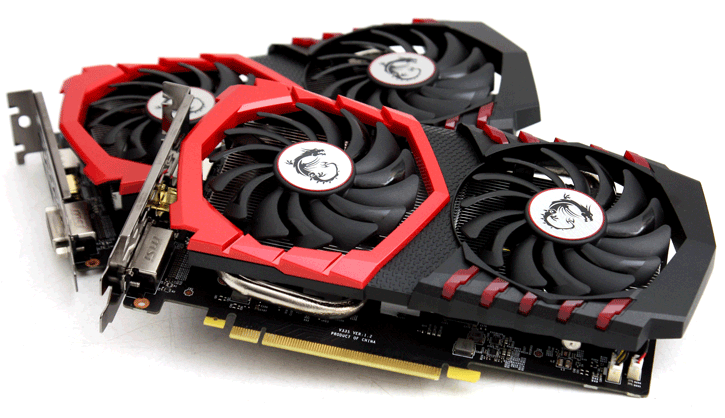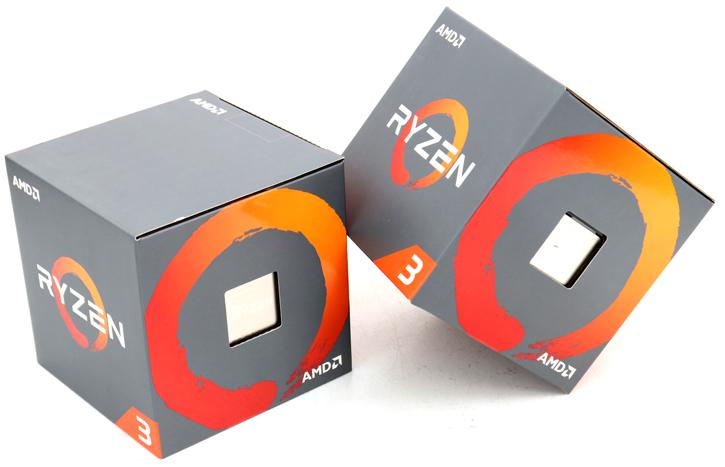The Bit - The Entry Level Build
The Bit - The Entry Level Build
Here we have 'The Bit.' It is a budget system for those looking to make a gentle foray into the world of PC gaming! Please bear in mind, at this budget, your experience (in some, not all) games is going to be either akin or slightly better than one of the base consoles from Sony or Microsoft (i.e. the PS4 or Xbox One). That said, we feel justified in making these recommendations as a 500 Euro PC can do things that these consoles cannot. Here are some of the differences:
- It is still a PC: At the end of the day, this 500 Euro PC is still a PC, and therefore it has a layer of functionality and use that you do not have with the consoles from Sony/Microsoft. Furthermore, hardware akin to what I will recommend will ensure that it is also a very good PC. Decent for gaming, and very decent for anything else!
- The option of 60 FPS: The main letdown of this console generation was the choice of CPU, an older Jaguar based Octa-Core setup from AMD. It was an odd choice, and the low clocks and older architecture are - mainly - what keep these consoles from hitting that smooth 60 FPS that attracts so many budding PC gamers and builders.
- An upgrade path: Like or not, components age. However, with the consoles, your options are fairly limited. Either buy into the generational and incremental upgrades brought on by the PS4 Pro or Xbox One X, or upgrade your PC bit by bit! At Guru3D, we ensure that these PC's have decent/solid upgrade paths, no matter how to budget the starting point.
CPU - AMD Ryzen R3 1200 or Intel Pentium G4560/4600
It goes without saying that, in the budget and value department, AMD currently holds the CPU crown. We recommended their Athlon X4 845 in the last version of this guide, but now Ryzen has taken the world by storm, we find ourselves recommending their budget oriented R3 1200 CPU (review here). Why? Well, 4 full cores is a decent reason to start off with, but add to that the ability to overclock on even the value B350 chipset (more on this in a moment), and you have a very solid entry level product on your hands. We felt entirely justified in giving it 5 stars, after all!
If, however, you should find yourselves unable to get your hands on AMD's R3 1200 or simply are not an AMD person, then another very solid option is Intel's Kaby Lake based (7th Generation) Pentium G4560. Now, let me be very clear here. This is a budget CPU with only two physical cores (albeit with 'Hyperthreading,' so the system reads the CPU has having four 'threads' or 'logical cores'). Some games run poorly on dual cores with hyperthreading, and stutter/generally poor performance is a potential issue.
Should you decide to for the Pentium (not a product that Guru3D has reviewed, but you can relatively easily find benchmarks and reviews of it on the web), then a pairing with any cheap B250 based motherboard is the basis for a decent budget gaming system. Similar and perhaps an even better choice would be the Intel Core i3-8100, four cores in the 129 EURO range.
Finally, we should note that - at this price point - we will not be concerning ourselves with any form of CPU cooler beyond what we happen to get included with the CPU itself. Intel's stock cooler is adequate for the Pentium, and the Wraith Stealth unit shipped with the (unlocked) R3 1200 is enough for a moderate 3.8Ghz overclock.
Graphics Card (GPU) - Nvidia GTX 1050/1050Ti or AMD RX 560
Since our last guide, both AMD and Nvidia have been hard at work releasing many a new graphics card. Sadly for us, many of these options are aimed fairly squarely at the middle to a high-end section of the PC gaming market. However, there are several enticing options for budget-conscious gamers!
Nvidia's GTX 1050 has always been marketed as an 'E-Sports' card, which should give you some idea of its target audience. The card comes equipped with 2GB of on-board GDDR5 video memory, which is certainly on the lower end in 2017. That said, given the overall potential of this GPU, having more than 2GB of VRAM is - essentially - entirely pointless. 1080p gaming is the aim of the game here, and it is a role that - for the most part - it'll perform well in, especially if your aim is to play less demanding titles, or you are happy with lower frames rates/graphical settings. If you are interested, you can check out our combined review of the 1050/1050Ti (up next) here.

GeForce GTX 1050 and 1050 Ti series from MSI with the Nvidia GP107-A1 GPU.
So, what about the 1050Ti? Well, if the 1050 is a 1080p 'E-Sports' card, then the 1050 Ti is perhaps the more ideal budget orientated GPU for 1080p gamers looking to play all current titles! Do not be mistaken, it is not (and was never intended as) a performance GPU. Whilst it has a nice 4GB of onboard VRAM, it's attractiveness lies in its increased raw power over the 1050. Expect performance to be sufficient for high quality (as in 'high' in game graphical settings, depending on the game) 1080p gaming at or around 60 FPS. Sometimes you may encounter a game that allows for 1080p 'Ultra,' and sometimes a game may still require the lowering of settings down toward 'medium' or even 'low,' depending on the title and how well it plays on PC.
If you would rather have a gander at AMD's budget GPU offerings, then look no further than the Radeon RX560! Whilst there is the RX550 to consider, we felt as though it's performance dip under even the low-end GTX 1050 wasn't truly enough for modern 1080p demands. The same is true for Nvidia's GT 1030. Again, whilst this site has not yet done a review on AMD's RX 560, our review of the RX 460 should tell you enough about the potential of both it and its bigger brother. The review is linked here.
Motherboard - AsRock AB350M Pro4 or MSI B250M PRO-VD
Budget is the aim here, and both of the above choices are the end very cheap end of their respective scale. For the AMD build, we go to AsRock's lower end Micro-ATX B350 board. For a prospective new builder, it has all you need. Support for high-speed DDR4 memory, overclocking of all AM4 CPUs, and plenty of connectivity. Overclocking is especially relevant on AM4, as an increase in speed on both the RAM and CPU can result in some very nice 'free' performance gains.
On the Intel side, we do not need to worry about overclocking, so the board choice quite literally came down the cheapest B250 board we could. Remember, we are going for value here, not looks or flashiness. If you want RGB, feature packed boards, or military grade build quality, go elsewhere (or spend more).
System Memory - 8GB DDR4 @ 2666-3200Mhz
Let's address a major issue. DDR4 is currently (and will be for a while) very expensive! This is largely due to the smartphone manufacturers switching over to DDR4 for use in handheld devices. Whilst great for the speed of our increasingly expensive handhelds, it has played havoc with the homebuilt PC market of late. As the price of RAM is so variable right now, I would strongly advise simply using the above as a guide to what you should be looking for as a minimum (in terms of speed, on the AM4 Ryzen platform). In reality for an entry-level PC, look around, find a compatible DDR4 8GB kit (2x 4GB), and call it a day.
Storage - 1TB HDD or 120/128GB SSD
At this price point, you usually have to choose between either bulk storage (in the form of a single (yet slower) 1TB HDD, or an SSD. Remember, the latter is notably faster in terms of boot times and loading of applications/games on said SSD, but capacity is notably reduced. Once the OS is installed on the SSD, you are left with around 80-85GB of free space, which is hardly enough - for instance - you can install Battlefield 1 and a maybe one other AAA game!
Due to this, your choice should be down to what you want to play, and how soon you think you might want the speed of an SSD, or the bulk storage potential of a large HDD. That is entirely up to you! Choices of HDD largely boil down to the 1TB offerings from either Seagate or Western Digital.
For an SSD, there are many brands. I would generally advise sticking to known brands, and - of these - companies like SanDisk, OCZ, Toshiba, Samsung, Plextor and Western Digital all make excellent and reliable SSDs at decent prices. If you are interested in reading some more in-depth reviews of these drives, then they are linked here, simply find one that suits the capacity you want!
Power supply (PSU) - 450-500W, 80+ Bronze
The choice of power supply (as I said earlier) is never, ever one you want to truly cheap out on. 'But Mr. Writer' (I hear you cry) 'these units are a fair bit cheaper than some others I have seen, aren't these budget, and isn't this 'cheaping out?' Well... yes, and no. It is certainly true that PSUs on the cheaper end of the scale are - for lack of a better term - 'budget.' However, as long as you listen to good advice, look at reviews, and buy from reputable brands, you will be ok. With that said, I will list some units below that I think are both reputable and functional, that also allow a potential GPU upgrade down the line! All units below have the ability to overclock their respective systems as well, with decent headroom.
- EVGA 500B (500W) 80+ Bronze PSU (non-modular).
- XFX XT 500W 80+ Bronze PSU (non-modular).
- Cooler Master MasterWatt 450W (semi-modular).
- Corsair CX550M 80+ Bronze PSU (semi-modular).
There are other units, many (many) other units, but trust in the three I have mentioned above for budget builds. They will serve you well, and all are capable of a GPU upgrade (or two) down the line. Here is a list of all the PSUs we have reviewed over the years if you are interested in taking a look at some higher end units as well.
Finishing up, and some odds and ends.
We have essentially finished talking about the innards of 'The Bit.' However, as said earlier in the guide, I specifically haven't mentioned anything to do with the chassis or peripherals. For the case, pick something that fits your motherboard (e.g. if you have an ATX/full-size motherboard, do not pick a MicroATX/Mini ITX case). I would advise not going 'super cheap' here, as really budget cases are often poorly built, have terrible airflow, and provide little room to either work in or expand in the future. I'll also the 'do I need a sound card' question now! The answer, for 99.9% of us... is 'No.' Modern motherboards have decent to 'very good' on-board audio, even at the budget end, and the only people who would need a sound card are likely the kind of people who would know they need said card, or simply just use an external DAC and/or amp. As for a monitor, this is - as stated - up to you. However, I would simply go for a 21-24'' 1080p 60Hz panel, and leave it at that. Fancy something with a tad more... horsepower? Well, let's take a look at 'The Nibble.' on the next page.


